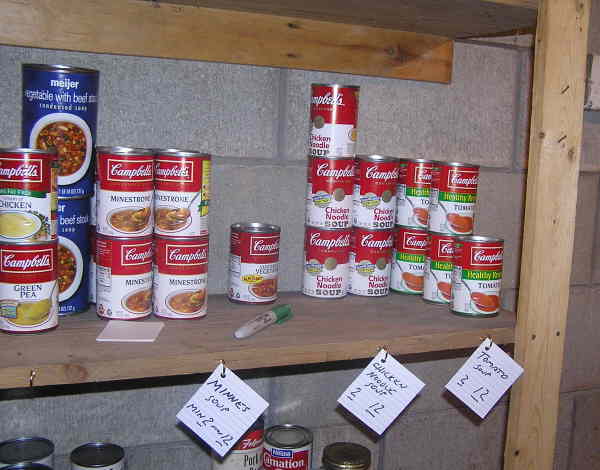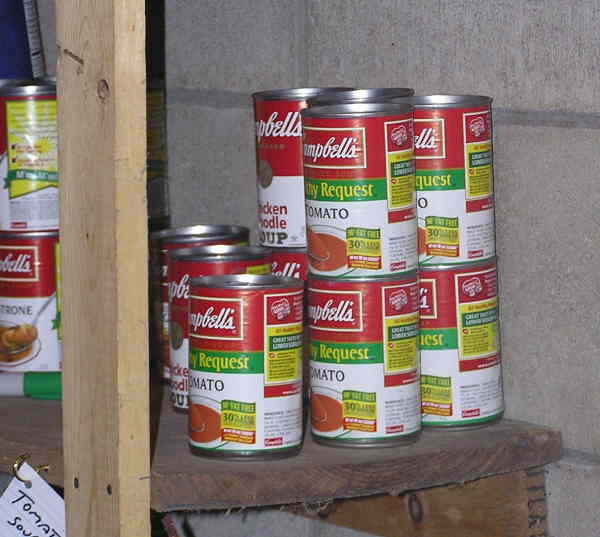
*Min/Max Inventory Control*
One of the risks of writing an article for an audience as sophisticated as Alpha Rubicon is that many, maybe even most, members will be WAY beyond what I am using. Still, the following method may be useful to some people.
The Min/Max inventory control is the method we use at work for point-of-use cabinets. I did not invent it. I saw how well it worked and brought the idea home.

To implement the idea, go to your storage area and see what you use on a regular basis. Pick a time frame...three months is commonly recommended because most stores have a three month "loop" on sales. Take a stab at how much of a given item you use in three months. Another reason is that three months of food does not take up an unreasonable amount of space. It is easy to keep close to the kitchen.
Cuphooks and pre-punched index cards are a very flexible way to start your Min/Max system. It does not have to be pretty to work.
Setting the Max:
Example: Suppose you serve spaghetti once a week and you use two cans of Hunt's Garlic and Herbs Spaghetti sauce. That is 26 cans of sauce. So 26 cans is the starting point for Max.
Fine-tuning the Max involves a few factors, primarily efficient storage and efficient buying.
Efficient storage: I can stack two soup cans but not three. A stack of three soup cans wants to topple. Because of the width of my shelving, I can put cans three deep on the shelf. So, 2 (tall) by 3 (deep) suggests multiples of 6.

A variant on this is case lot. The spaghetti sauce mentioned above is bulky and heavy (28 oz per can), so we store it on the bottom shelf (floor) in the cases. Cases hold 12 cans. So the natural multiple for spaghetti sauce is 12. Since 26 is between 24 and 36...guess which we pick for a max.
Another reason for using multiples is that it makes counting easy. Count the number of spaces where you can see the wall and multiply by the multiple.
Setting the Min:
Max minus min should be three months (or whatever) usage.
Some items, like vitamins can have Mins of zero because they come in packages of 300. Our family does not use 300 multiple vitamins in three months.
Supporting the Min/Max system with batch buying:
A supporting practice for Min/Max inventory is to use a generic shopping list. This shopping list pre-lists the items you store. You simply write the numbers required to bring the counts back to Max. We arranged our list in the order that items show up aisle-by-aisle in our local store. Items that are not on sale are not purchased unless the count is below Min. Frequent buys that are driven by Min cause us to increase the Max.
Once you start using the generic shopping list you are likely to add some perishable items like bananas and milk because it is an easy way to capture the information that you need to pick some up.
A final note, there is a strong tendency for the list to grow so large that it becomes unusable. Another problem with purchasing a bazillion types of food items is that it seems to drive up waste. Items will expire before they are used up or you will be left with an unusable partial portion that needs to be tossed.
Joe
www.alpharubicon.com
All materials at this site not otherwise credited are Copyright © 1996 - 2007 Trip Williams. All rights reserved. May be reproduced for personal use only. Use of any material contained herein is subject to stated terms or written permission.